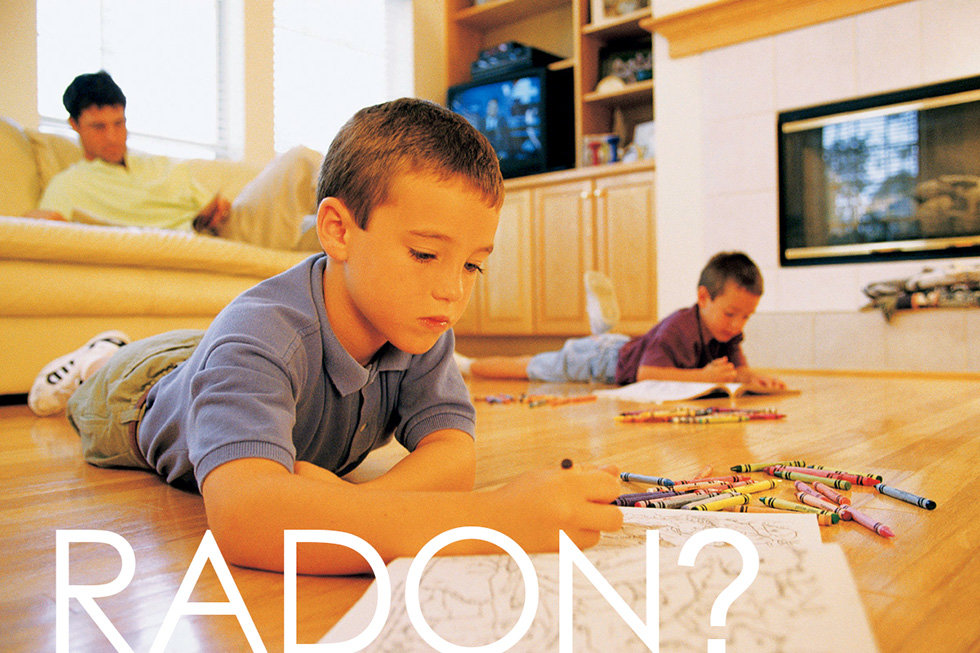Radon and Your Park City Home
Posted by Sean Matyja on Monday, January 8th, 2018 at 11:48am.

January is Radon Action Month. So what is Radon? And why is there a whole month of action for it?
Radon is a cancer-causing radioactive gas. It comes from the natural decay of uranium that is found in nearly all soils. Radon can be found all over the U.S. It typically moves up through the ground to the air above and into your home through cracks and other holes in the foundation. Your home traps radon inside, where it can build up. Any home may have a radon problem, this means new and old homes, well-sealed and drafty homes, and homes with or without basements. You can’t see radon, you can’t smell it or taste it, hence the call to action. You and your family are most likely to get your greatest exposure to radon at home, where you spend most of your time.
So now you know what radon is and where it comes from, how do you know if it is a problem in your home?
Radon testing is easy, and typically inexpensive.There are two types of testing, short term testing and long term testing. Short term testing is obviously the quickest way to test. The testing device remains in your home for two days to 90 days, depending on the device. Long term tests remain in your home for more than 90 days, and are used to get a year round average of radon in your home. There are many kinds of low-cost “do-it-yourself” radon test kits you can get through the mail (some are even free). You can also find them in some hardware stores and other retail outlets. If you prefer, or if you are buying or selling a home, you can hire a qualified tester to do the testing for you. More often than not home buyers and renters are asking about radon levels before they buy or rent a home. Because real estate sales happen quickly, there is often little time to deal with radon and other issues. The best thing to do is to test for radon NOW and save the results in case the buyer is interested in them.
Now what to do about your test results and what do they mean?
The average indoor radon level is estimated to be about 1.3 pCi/L, and just to give you an example- about 0.4 pCi/L of radon is normally found in the everyday outside air. The amount of radon in the air is measured in “picocuries per liter of air,” or “pCi/L.” . The U.S. Congress has set a long-term goal that indoor radon levels be no more than outdoor levels. While this goal is not yet technologically achievable in all cases, most homes today can be reduced to 2 pCi/L or below.
Sometimes short-term tests are less definitive about whether or not your home is above 4 pCi/L. This can happen when your results are close to 4 pCi/L. For example, if the average of your two short-term test results is 4.1 pCi/L, there is about a 50% chance that your year-round average is somewhat below 4 pCi/L. However, the EPA believes that any radon exposure carries some risk, because no level of radon is safe. Even radon levels below 4 pCi/L pose some risk, and you can reduce your risk of cancer by lowering your radon level. If your living patterns change and you begin occupying a lower level of your home (such as a basement) you should re-test your home on that level. Even if your test result is below 4 pCi/L, you may want to test again sometime in the future.
If your test results show a high radon of level, you should plan to install a radon mitigation system. There are several proven methods to reduce the radon level in your home, but the one primarily used is a vent pipe system and fan, which pulls radon from beneath the house and vents it to the outside. This system, known as a soil suction radon reduction system, does not require major changes to your home. Sealing foundation cracks and other openings makes this kind of system more effective and cost-efficient. Similar systems can also be installed in houses with crawl spaces. Radon contractors can use other methods that may also work in your home. The right system depends on the design of your home and other factors. The cost of reducing radon in your home depends on how your home was built and the extent of the radon problem. Most homes can be fixed for about the same cost as other common home repairs. And the cost is generally much less if a passive system was installed during construction of the home.
Below we have provided links for more general information on Radon and professional companies that specialize in Radon detection and mitigation.
EPA information: https://www.epa.gov/radon
Radon Inspections and Mitigation:
Abodee Inspections and Radon
Kurt Salomon
kurt@radonutah.com
Utah Radon Services
https://www.utahradonservices.com/radon-resources/
Sean Matyja - Realtor® / Associate Broker
Mobile: (435) 901-2158 | Email: sean@enjoyparkcity.com